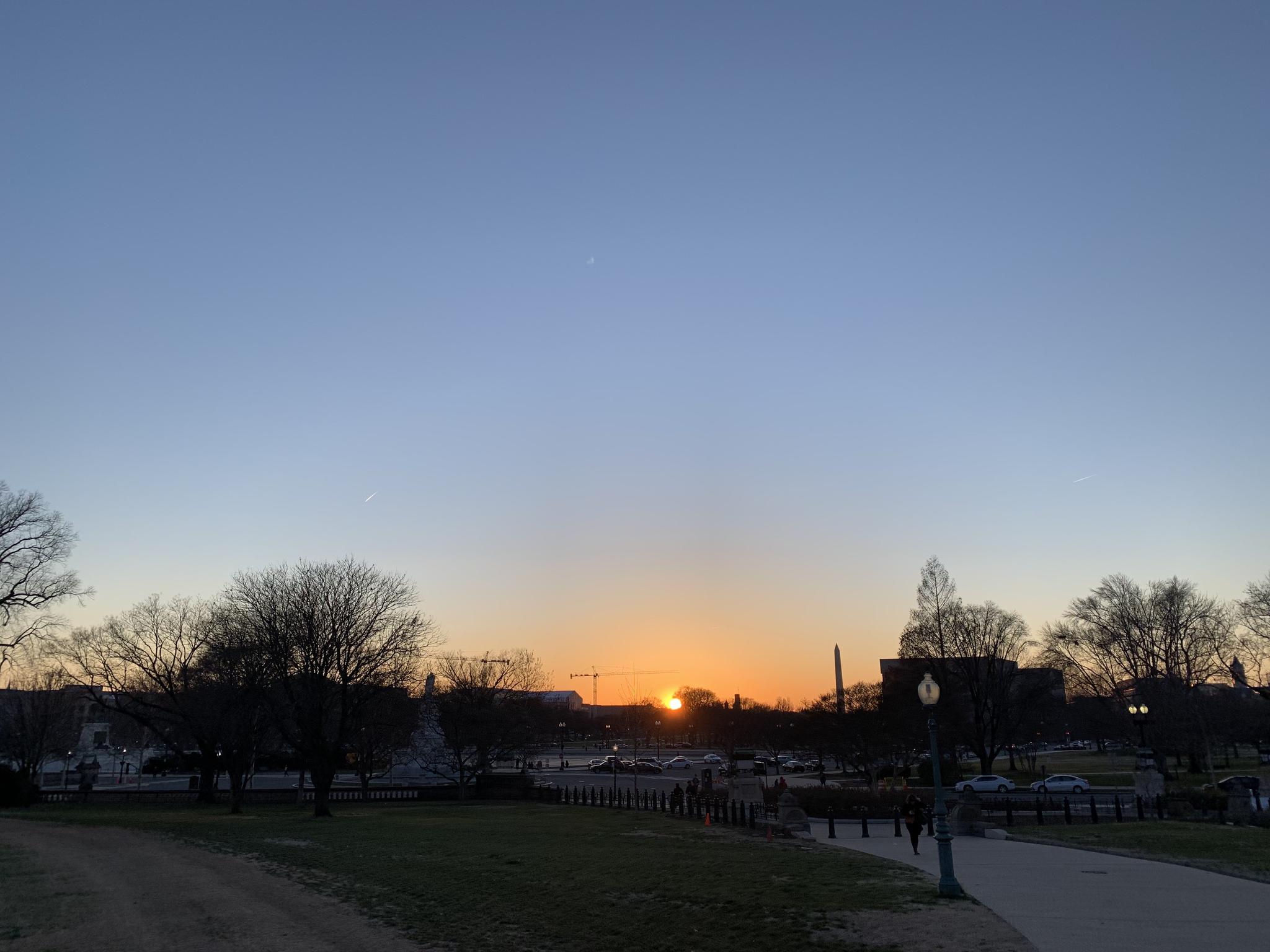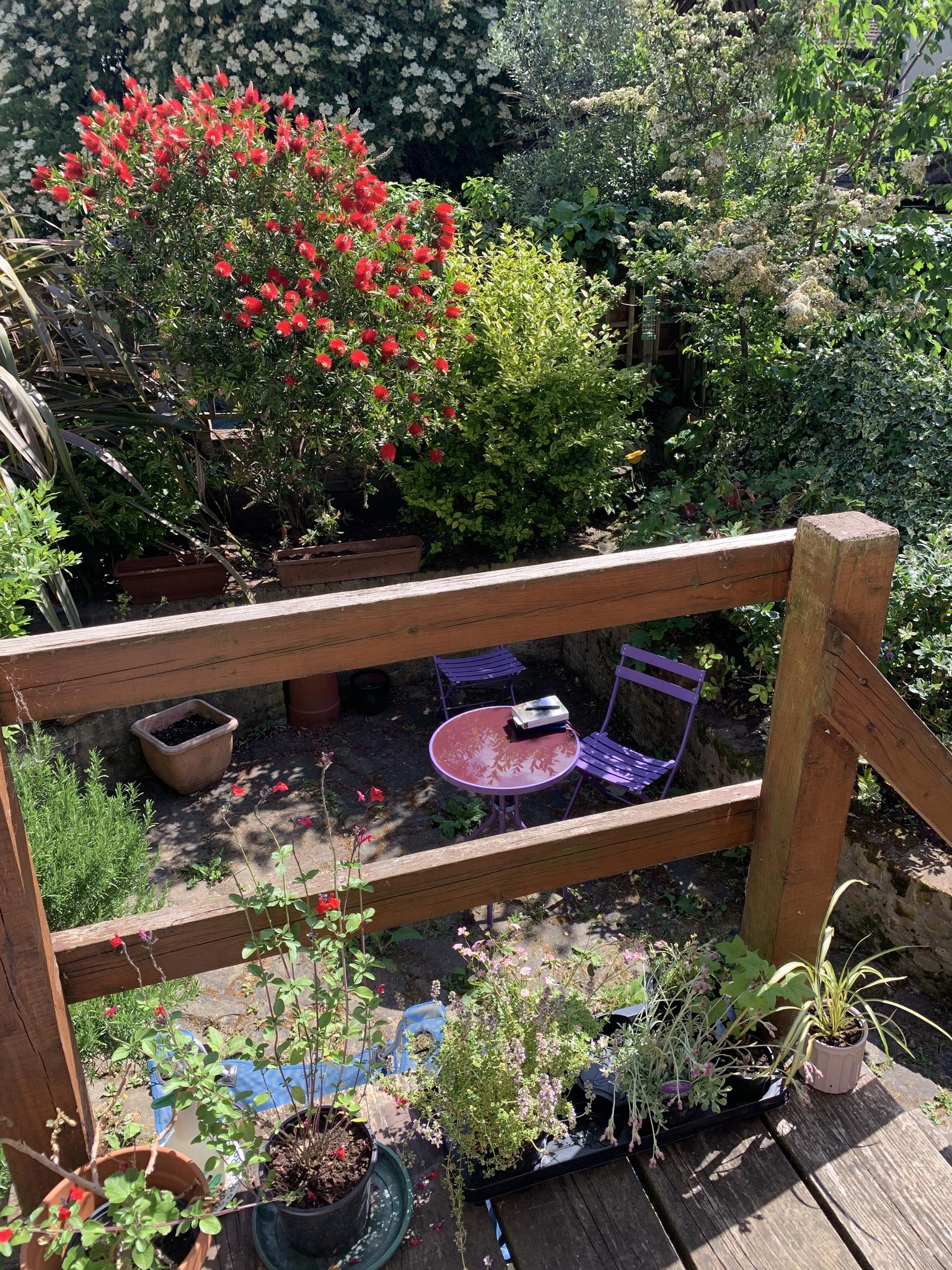Harriet Thompson: 'So the Light Turned'

The shadow growing darker and darker over the moor was like the heeling over of a boat, which, instead of righting itself at the critical moment, turns a little further and then a little further; and suddenly capsizes. So the light turned and heeled over and went out. This was the end.
On a bright morning in mid-March, I landed at Heathrow airport. Sick with sleepiness after an overnight flight, I trundled uncomfortably around the Arrivals lounge with my two suitcases, unsure where to stand while I waited to be collected. The airport was busy with panicked travellers returning home. Some people were wearing masks. Was the air buzzing with tension, or was I jetlagged? Small groups were packed alongside each other, waiting. A steady stream of suitcases paraded past, heading for the car park. A cricket team appeared wearing embroidered team shirts and laden with kit. There was a chaotic queue for Caffé Nero as weary passengers sought to rouse themselves with coffee before returning to their cars. My boyfriend arrived. We bought two flat whites and nursed them at a crumby table in the corner of the café. In the Monday morning rush hour traffic, the drive home to south London took nearly two hours.
These scenes seem impossible now, unthinkable. Eleven weeks have slipped by and, while we have barely moved, everything around us has shifted.
I had been living in Washington D.C. for six weeks when the virus escalated into a global health crisis that was threatening to close borders, locking down countries indefinitely. The situation was changing by the hour. Sitting in a reading room at the National Museum of American History, I checked my phone every ten minutes: news updates, messages from family, government announcements, death tolls. The Smithsonian Institution announced the closure of all its museums and archives. I booked a flight home.
The days, weeks, months unfurled ahead of us.
***
Buses, vans, cars, barrows stream past like the fragments of a picture puzzle; a white arm rises; the puzzle runs thick, coagulates, stops; the white arm sinks, and away it streams again, streaked, twisted, higgledy-piggledy, in perpetual race and disorder. The puzzle never fits itself together, however long we look.
Virginia Woolf has a certain way of capturing the kaleidoscopic experience of the city. Several weeks into lockdown, I found myself recalling scraps of scenes from her essays and novels, moments of urban interaction and liveliness for which I now longed. Mrs Dalloway striding out to buy flowers, the throbbing crowds of Oxford Street, a packed opera house, the roaring of aeroplanes over the city, riding the top deck of a bus as it tears down the Strand, stepping out of the front door for a walk as the sky begins to darken.
What do you miss most? A cold pint perspiring in the sun on a sticky pub table. Weaving through a crowded street. Popping into a shop on a whim. Going out for lunch. Waiting for the bus. Sitting on the bus. The small but significant moments that make up an ordinary day.
Yearning for the variety of normal life; the myriad interactions, casual conversations, chance encounters, solitary moments, the movement between places. The struggle to concentrate on one thing made focusing on research or writing difficult. I sought out fragments in an attempt to make sense of things: small morsels of consolation on the internet, a funny video, a heart-warming story, an important crumb of information. But the puzzle never fits itself together, however long we look.
I turned to Woolf, hoping she might be able to offer a productive distraction, and suggested to some friends that we start an online reading group focusing on her essays. Our first meeting was a warm hug, nine faces floating on a screen. We read an essay about watching a moth die on a windowsill. We discussed the purpose of an essay. What does it do? How much can a few short pages hold in the palm of its hand? How does the death of a moth come to stand in for the fleetingness of life and the transience of creativity? Can it stand in for those things? When Woolf writes about a solar eclipse is she also writing about the aftermath of a war, or a global pandemic?
So the light turned and heeled over and went out. This was the end. The flesh and blood of the world was dead and only the skeleton was left. It hung beneath us, frail; brown; dead; withered. Then, with some trifling movement, this profound obeisance of the light, this stooping down and abasement of all splendour was over. Lightly, on the other side of the world up it rose; it sprang up as if the one movement, after a second’s tremendous pause, completed the other and the light which had died here, rose again elsewhere.
It seems impossible to reach any satisfying conclusions at the moment. Perhaps that’s what makes it so difficult for me to write, to argue, to continue the research I was doing in America. But there is solace in new life, in observing the changing seasons and watching seeds sprout in the ground. This little reading group is the seed I planted during lockdown and I’m watching it germinate. I don’t know if we’ll continue meeting to discuss Woolf when the lockdown is lifted, but, for now, I relish the floating faces and disorganised discussion.
I keep thinking about Woolf’s description of the moment after the eclipse, when the sun re-emerges from behind the moon: Never was there such a sense of rejuvenescence and recovery. All the convalescences and respite of life seemed rolled into one.

Harriet Thompson is a PhD researcher in the Department of English at King’s College London. Funded by LAHP, her research explores the influence of electrical telegraphy and transatlantic communication on nineteenth-century British and American literature. Harriet runs the reading group Essaying Woolf and is co-editor of the King’s English blog.
